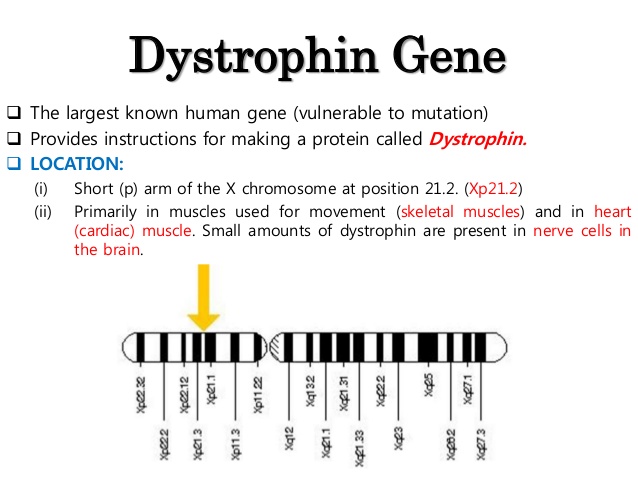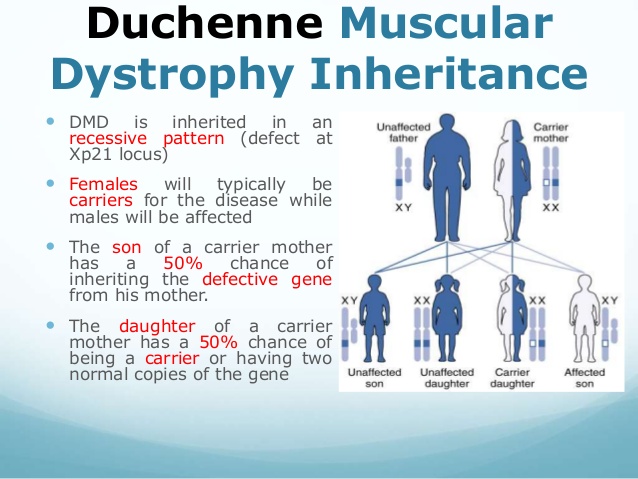Why is inheritance of dystrophin gene not studied under Mendelian inheritance of characters? What is the cellular process for production of dystrophin and what actually is the problem in muscles of people who suffer from Duchenne Muscular Dystrophy?
1 Answer
There are three distinct questions within this query. So the answer is written in three parts.
Explanation:
First thing first. Gene for muscle protein dystrophin is located on small arm of X chromosome. This is the reason why mutation in the gene would not be carried forward as we see in Mendelian inheritance.
The gene follows criss-cross inheritance.

Criss-cross inheritance of genes occurs when these are X linked and recessive. Mutated form of dystrophin gene is carried by phenotypically normal females, who may give birth to affected sons. It happens when mother's ovum with wrong allele on X gets fertilised by Y containing sperm.

Recessive genes on X chromosome are expressed in hemizygous condition i.e. in males who have a single dose of X, and no corresponding dominant gene is present on Y. Duchenne muscular dystrophy is a disease reported only in males who generally die before marriage and children.
(There are reports of female carriers who developed symptoms in adult life. )
The condition is passed on from mother to son. Earlier, average lifespan of affected individuals was short- 14.4 in 1960s. Medical science has changed that. Today many are reaching their 30s and may have children. In that case birth of affected female can not be ruled out if partner is a carrier of the disease.
.........................................................................................................................
Second part of the answer deals with basic genetics regarding gene expression:
Gene for dystrophin is a written message found in genomic DNA, which will be copied or transcripted on RNA. It is like copying a single recipe on RNA from a huge cookbook of DNA.
Please note that the gene is one of the longest found in human (2.3 megabases long) with as many as 79 exons. The corresponding mRNA contains codons for 3685 amino acids which are read on cellular ribosomes during protein translation. Functional dystrophin is large, 150 nm long rod shaped molecule and 427 kDa in weight.
Molecular events leading to formation of normal dystrophin are Transcription (DNA
........................................................................................................................
Third question wants an answer regarding the problem in muscle tissue of victims of DMD. Absence of normal dystrophin causes muscle weakness and progressive degeneration This is due to nonattachment of cytoskeleton with sarcolemma and exracellular collagen.
Please note that 60% to 70% of affected individuals carry a deletion in the gene. 10% to 15% of the cases are due to duplication within the gene. 15% to 30% patients carry a point mutation which causes premature chain termination during translation.
In all the above cases, an abnormal protein is generated. Dystrophin is part of a large complex called costamere (=dystrophin associated protein complex) present in striated muscles (including cardiac type). Costamere attaches the contracting unit sacomere to sarcolemma so that contraction of sarcomere may also cause contraction of muscle cell.
Boys with DMD learn to walk late and there is generally an enlargement in the calf region of toddlers. They face trouble in running or climbing stairs and by adolescence they become wheelchair bound.
Gradual weakening of respiratory muscles cause dullness, and poor health. Chances of chest infection rises in adulthood. Till now there is no cure for the disease.
